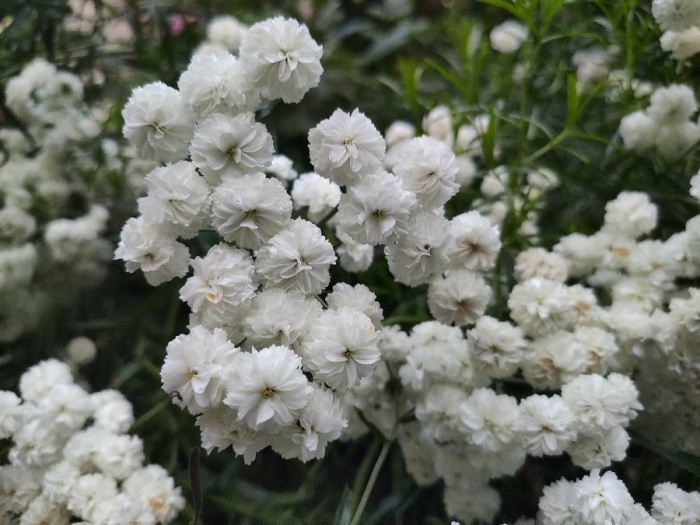Sneezeweed
(Achillea ptarmica)
Sneezeweed (Achillea ptarmica)
/
/

Beatrice Panzeri
CC BY-SA 4.0












































Estimated Native Range
Summary
Sneezeweed is valued for its extended flowering period and its ability to attract pollinators such as bees and butterflies. It is commonly used in cottage gardens, mixed borders, and wildflower meadows. This species thrives in full sun to part shade and prefers moist, well-drained soil. It is a hardy plant that can tolerate hot, humid summers and periods of drought once established. Propagation is typically done by sowing seed or division in spring. While Achillea ptarmica is a low-maintenance plant, it can spread aggressively by rhizomes and self-seeding, potentially becoming invasive outside its native range. Gardeners should be cautious and consider planting non-invasive alternatives or managing its spread through regular maintenance.CC BY-SA 4.0
Plant Description
- Plant Type: Herb
- Height: 0.8-1.5 feet
- Width: 1-2 feet
- Growth Rate: Rapid
- Flower Color: White
- Flowering Season: Summer, Fall
- Leaf Retention: Deciduous, Semi-deciduous
Growth Requirements
- Sun: Full Sun, Part Shade
- Water: Medium, High
- Drainage: Slow, Medium, Fast
Common Uses
Bee Garden, Bird Garden, Butterfly Garden, Deer Resistant, Drought Tolerant, Edible*Disclaimer: Easyscape's listed plant edibility is for informational use. Always verify the safety and proper identification of any plant before consumption., Fragrant, Groundcover, Hummingbird Garden, Low Maintenance, Potted Plant, Rabbit Resistant, Salt Tolerant, Showy Flowers
Natural Habitat
Moist meadows, marshes, and along streams in Europe
Other Names
Common Names: Sneezewort, False Sneezewort, Pearl Yarrow, Sneezeweed Yarrow, Fair-Maid-Of-France, Wild Pellitory, Bastard Pellitory, European Pellitory, Sneezewort Yarrow, White Tansy
Scientific Names: , Achillea ptarmica, Achillea ptarmica subsp. euptarmica, Achillea ptarmica f. ptarmica,
GBIF Accepted Name: Achillea ptarmica L.